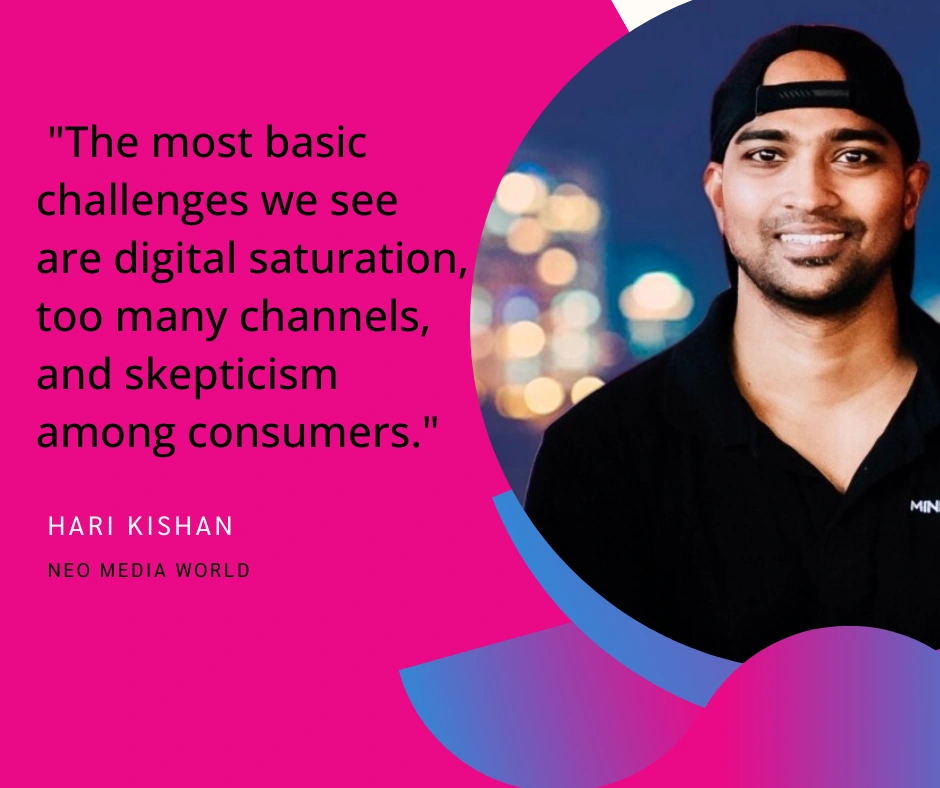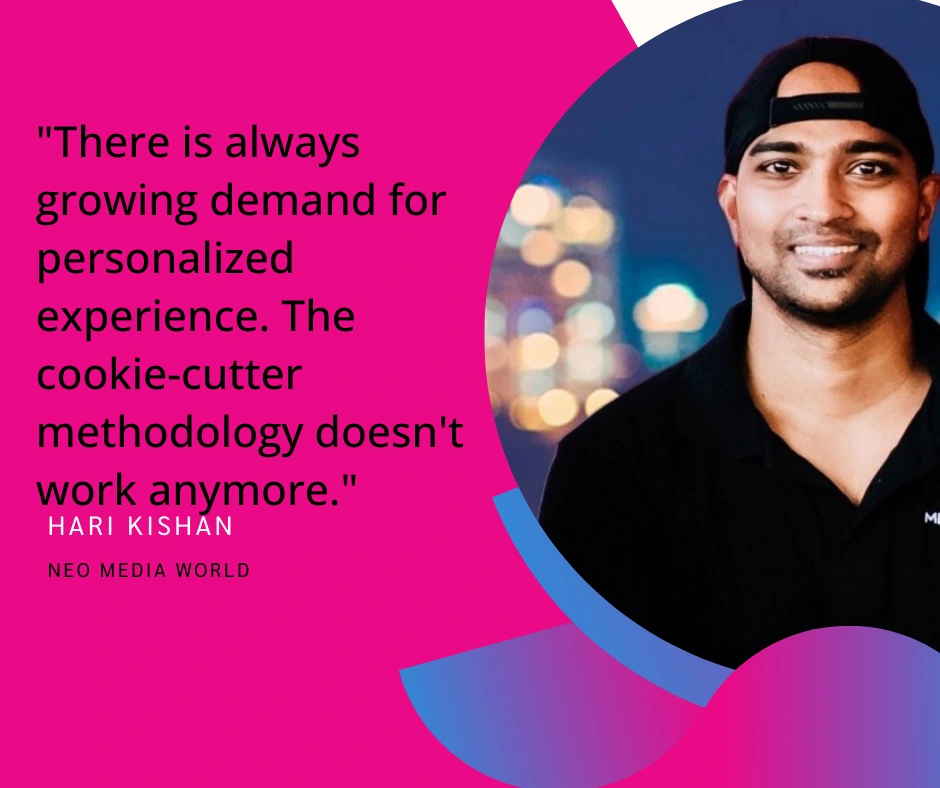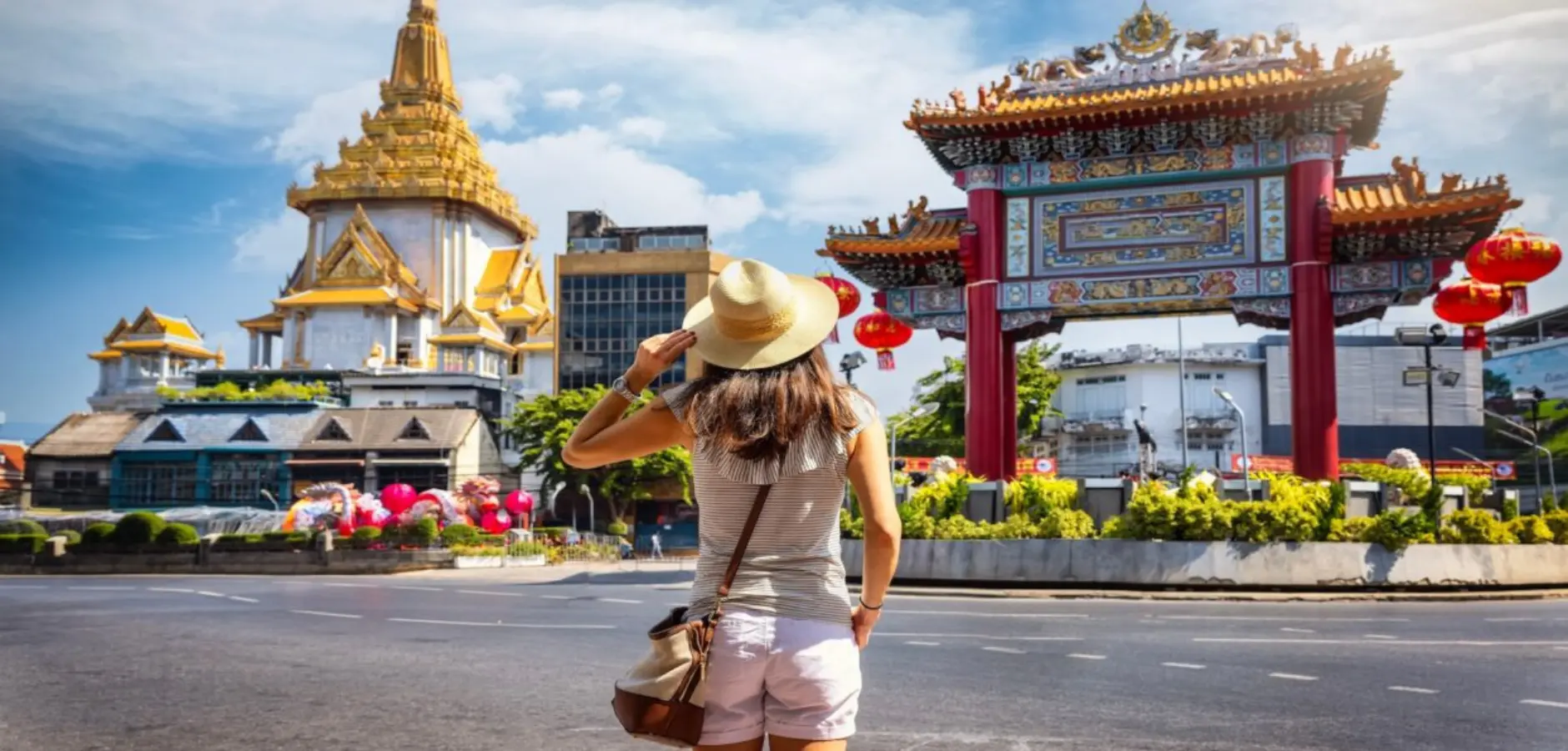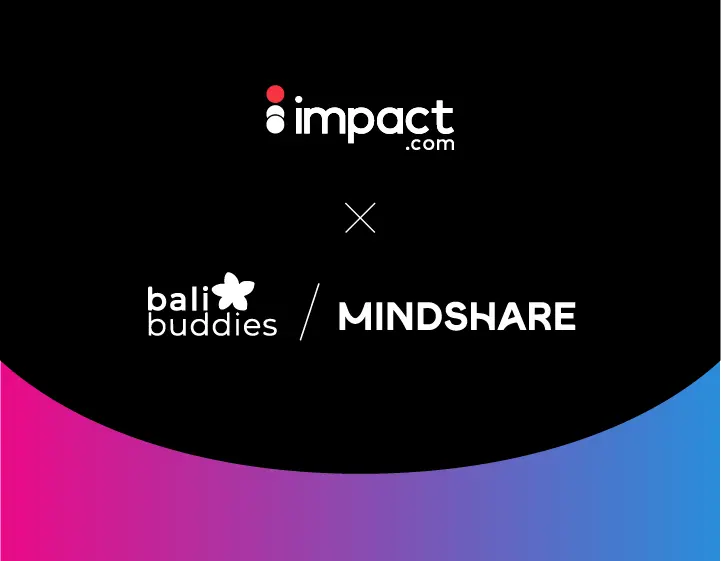With platforms like TikTok, Instagram, and YouTube dominating consumer attention, influencer marketing has emerged as a powerful tool to foster authenticity and relatability.
In a recent webinar, industry leaders Karlie Cummins from Bali Buddies Media and Hari Kishan from Neo Media World discussed the nuances of influencer marketing, offering actionable insights for travel brands looking to leverage this strategy effectively.
Marketers increasingly face challenges in reaching and engaging their audience:
- 47% of the population in APAC use ad blockers on at least one of their devices.
- 91% of people say digital ads are becoming increasingly intrusive.
- 79% of customers feel tracked by targeted and timed adverts.
- Only 42% of people trust online banner ads, compared to 56% who trust billboard messages.
These figures highlight an opportunity for innovation in digital advertising: evolving strategies, engaging content, and building consumer trust. Traditional digital marketing methods are adapting to stand out.
In Southeast Asia, people are spending 2 to 3 hours daily on social media platforms like TikTok, Instagram, and YouTube — opening ample opportunities for brands to engage with new audiences through social media.
This webinar explores how influencer marketing offers a promising solution to the challenges of modern digital advertising. Join industry leaders Karlie Cummins from Bali Buddies Media and Hari Kishan from Neo Media World as they discuss:
- The current state of digital advertising and its limitations
- The rise of influencer marketing as an authentic and reliable alternative
- Actionable insights for travel brands looking to leverage influencer strategies effectively
Don’t miss this opportunity to gain valuable insights into the future of marketing in an increasingly ad-resistant world
The role of influencer marketing in the travel industry
By partnering with influencers, travel brands can extend their reach beyond their immediate audience, tapping into new demographics through the influencer’s unique style and creative approach and aligning campaign goals with travel trends and seasonal demands like festive seasons in Southeast Asia.
One of the primary benefits of influencer marketing is its ability to reach desired audiences effectively. In a region where 1 out of 2 Southeast Asians follow influencers on social media, collaborating with influencers fulfills the relationship gaps brands have with target audiences. Influencers bring their engaged followers, allowing brands to connect with potential customers who might not have discovered them otherwise.
“Influencer marketing is using a platform outside your brand that has an audience that your brand would like to reach, and you use their marketing style and creative approach to reach their audience to do exactly that,” says Cummins, highlighting the strategic advantage of this approach.
The undeniable ROI from working with content creators
Additionally, influencer marketing can generate a remarkable return on investment. According to research by Influencer Marketing Hub, some campaigns achieve up to 500 percent ROI, showcasing the significant impact this strategy can have.
Kishan explains, “It’s a strategy where the brands collaborate with certain individuals who have a very significant and engaged following on social media, any digital platform for that matter.” This collaboration not only boosts brand visibility but also builds credibility through the trusted voices of influencers.
Implementing influencer marketing allows travel brands to create authentic connections with their audience, enhancing relatability and trust. As brands compete for attention, authenticity stands out, making influencer marketing a valuable tool for brands looking to make a meaningful impact.

Overcoming challenges in digital marketing for travel brands
Digital marketing is fraught with challenges in the travel industry due to the overwhelming amount of content available and growing consumer skepticism. With countless brands vying for attention, travel businesses must identify the right channels and create personalized experiences that resonate with their audience.
The sheer volume of content makes it difficult for brands to stand out. Kishan notes, “The most basic challenges we see are digital saturation, too many channels, and skepticism among consumers.” This saturation necessitates a more strategic approach, where brands must carefully select the platforms that best align with their target audience.
Another significant challenge is the longer conversion funnel typical in the travel industry. Unlike fashion or beauty products, travel decisions take time. Tourists often gather ideas months before traveling. Cummins observes that people planning to visit Bali gather ideas 6-12 months in advance. They’re in the higher funnel stage, noting experiences and destinations but not making immediate bookings. Brands need to invest in building awareness across multiple channels so that when tourists reach the decision stage, the brand becomes top of mind.
Travel is an experience that requires alignment across the funnel
Travel is an experiential purchase, requiring alignment and consistency throughout the consumer journey. Tourists make decisions about the entire travel experience—from securing airline tickets to hotel stays to activities available at the destination.
As Cummins explains, marketing isn’t just about selling a city; it’s about offering a complete package deal that includes flights, transportation from the airport to the hotel, and curated activity packages. Aligning these offerings with the target audience’s expectations at every stage of the funnel is crucial.
Travel brands can leverage influencer partnerships to build trust among increasingly discerning consumers. According to a 2023 survey by Deloitte, 78 percent of consumers trust recommendations from influencers over traditional advertisements. This statistic highlights the importance of influencers in boosting credibility and engagement.
The demand for personalized experiences
The traditional cookie-cutter approach no longer suffices. Brands must tailor their content and interactions to meet each customer’s unique preferences and needs. Notably, 68 percent of consumers in Asia Pacific are willing to share personal data in exchange for personalized products or services (Accenture).
As Kishan points out, “There is always growing demand for personalized experience. The cookie-cutter methodology doesn’t work anymore.” This shift toward personalization requires brands to leverage data and insights to craft targeted campaigns that truly engage their audience.
To effectively navigate these challenges, travel brands should focus on creating authentic, value-driven content that cuts through the noise. By understanding their audience’s preferences and delivering tailored experiences, brands can build stronger connections and foster trust in an increasingly skeptical market.

Travel brands can enhance engagement and reach
By leveraging the trust and influence of online personalities, brands can reach targeted demographics with captivating and relatable content. Consumers, especially Gen Zs, rely on social media for travel inspiration. One of the standout benefits of influencer marketing is its ability to offer authentic engagement. Influencers create content that resonates deeply with their followers, fostering a genuine connection.
Kishan highlights this by stating, “The engagement that some of the influencers have is very authentic, very captivating. They have targeted reach and are very adaptable.” This authentic engagement helps brands build trust and loyalty among potential customers.
In addition to engagement, influencers provide targeted reach. By collaborating with influencers who align with their brand values and audience, travel brands can ensure their message reaches the right people. This targeted approach can lead to more effective and efficient marketing campaigns.
Influencers are adaptable to different channels
Adaptability is another significant advantage of influencer marketing. Influencers are skilled at tailoring content to fit various campaign needs and audience preferences. Cummins emphasizes the importance of this flexibility: “You need to really listen to the influencer on how they want to present your brand or product.” By allowing influencers to use their creative input, brands can produce content that is both engaging and effective.
On average, Southeast Asia consumers use between 3-4 social media platforms, and 90 percent of the time, includes YouTube, Facebook, and TitTok. By diversifying influencer marketing campaigns across multiple social media channels, travel brands can better connect and increase touchpoints with their target audience.

Content creators are partners to your brand
Successful influencer collaborations are critical for maximizing the potential of influencer marketing. To achieve this, brands must understand the influencer’s audience and remain open to their creative input. Authenticity is essential, as influencers deeply understand what resonates with their followers.
One key aspect of effective collaboration is actively listening to influencers’ feedback. They have a unique perspective on presenting products in a way that will authentically engage their audience.
Cummins emphasizes this: “It’s really important to listen to the influencer to let them give you their feedback that my audience would love to see this.” By valuing and incorporating this feedback, brands can create more compelling campaigns.
Authenticity is at the heart of successful influencer partnerships. Ninety percent of consumers in Asia Pacific say authenticity is important when deciding which brands they like and support. Brands must maintain their genuine style while leveraging the influencer’s authentic connection with their audience.
As Cummins notes, “We need to stay authentic to our style, and I think that’s something you need to keep in mind when you’re working with influencers.” This authenticity fosters trust and engagement, making the marketing efforts more impactful.

Tracking and measuring success in influencer marketing
Leveraging advanced technology to link directly to social accounts and websites enables real-time monitoring and performance assessment. Effective tracking begins with using specialized platforms that integrate seamlessly with your social media and web presence. This approach is increasingly crucial in Southeast Asia, where the influencer marketing industry is projected to grow at a CAGR of 11.39 percent from 2024 to 2028.
Cummins underscores this advantage: “We use a technology that links directly to our social accounts and our website and its live reporting tools.” This integration allows for precise data collection and immediate campaign performance insights.
Brands should review campaign performance d regularly. By continuously analyzing data, brands can identify what’s working and where improvements are needed.
Kishan highlights the importance of this practice: ” We use specialized technology platforms to track everything from a very traditional affiliate partner to an influencer down the bottom funnel.” This comprehensive tracking ensures that every aspect of the campaign is measured, providing actionable insights for optimization.
To maximize the effectiveness of influencer marketing, brands should embrace technology that offers detailed analytics and live reporting. This approach tracks success and empowers brands to make informed decisions, enhancing overall campaign performance and driving growth.
Navigating regional nuances in Southeast Asia
It’s essential to tailor campaigns to the specific behaviors and preferences of audiences in different countries. Understanding regional language, culture, and platform preference is crucial for effective marketing.
Each country in Southeast Asia has unique cultural preferences, market demand and shopping habits that influence consumer behavior. Cummins emphasizes this understanding: “You need to understand what those audiences like, where they like to interact, which platform they like to interact on, and what type of content they like to see.” Recognizing these nuances allows brands to craft content that resonates deeply with local audiences.
Tailoring content and platform strategies to fit regional differences is vital. Kishan notes, “Each country is very different with its own set of languages and cultures. You could totally even dissect each country into different segments.” This segmentation allows for more precise targeting, ensuring that marketing efforts are relevant and engaging.
Cummins further highlights the complexity: “I definitely don’t think you can just run one campaign because the behavior of people even just in Indonesia—from Bali to Jakarta—is different. It’s a different approach depending on who you’re trying to get, let alone targeting somebody from Singapore or from Malaysia.”
The rise of TikTok and social commerce
TikTok’s integration of e-commerce is a game-changer for influencer marketing. Kishan highlights this shift: “The advent of TikTok changed the game, not just on what TikTok is originally, but also the fact that it now has an e-commerce platform.” This development allows brands to leverage influencers on TikTok to drive direct sales, creating a seamless link between content and commerce.
Younger audiences now use TikTok as a primary research platform, significantly impacting how brands should strategize their marketing efforts.
Cummins notes, “The behavior of a lot of the younger audiences, they’re researching on TikTok rather than on Google.” This trend underscores the importance of having a strong presence on TikTok to capture the attention of these tech-savvy consumers.
To capitalize on these emerging trends, travel brands should integrate TikTok-focused strategies into their marketing plans. By doing so, they can more effectively engage younger audiences and leverage the platform’s e-commerce capabilities to drive growth. Adapting to these shifts will ensure brands remain competitive regardless of the economic climate.
Viewing influencers as affiliates
Integrating affiliate and influencer marketing programs presents a compelling opportunity for brands to build long-term relationships with high-performing influencers. By adopting a performance-based reward model, brands can ensure sustained engagement and mutual growth.
Hybrid payment models are particularly effective in nurturing these relationships. As Kishan notes, “I think the best model would be a hybrid model, just because it gives the brand the edge to also track how the performance is.” This approach combines a flat fee with affiliate commissions, aligning the interests of influencers and brands. Influencers receive immediate compensation while also benefiting from commissions on sales they directly drive, creating a win-win situation.
“If the performance is really good and it’s giving a certain amount of output, they really are partners for extended periods of time going into years,” explains Kishan. By incorporating hybrid payments, brands can foster long-term partnerships with influencers, ensuring sustained engagement and performance tracking.
You can further explore influencer marketing with these recommendations:
eCommerce influencer marketing in Southeast Asia (research report)
The ultimate playbook for influencer marketing in Southeast Asia (ebook)
The ultimate guide to influencer tiers (ebook)
How to recruit the right content creators for your brand (blog)
Ultimate Playbook for Influencer Marketing in Indonesia (ebook)






